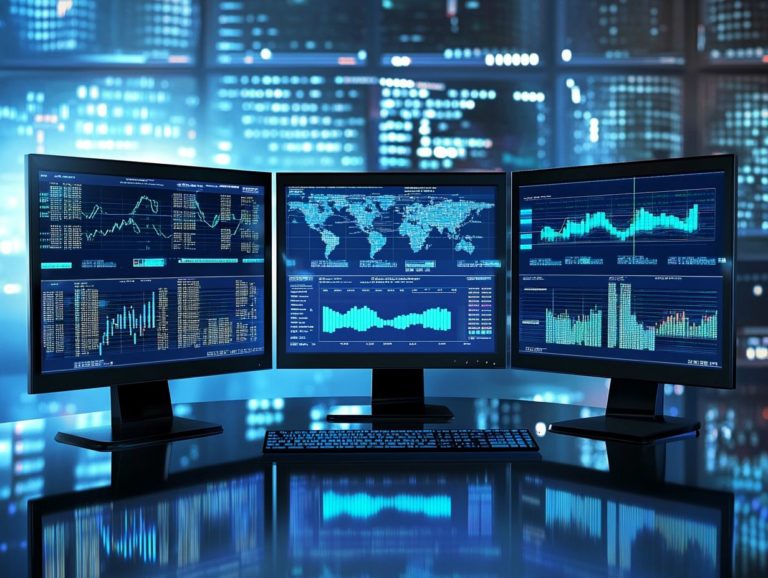Investment Potential of Platinum in 2024
Platinum, often cast aside in favor of gold and silver, is poised to become a captivating investment opportunity in 2024.
With a nuanced interplay of supply and demand dynamics influencing its market, grasping the current landscape is essential if you’re considering investing.
This article delves into the latest trends, forecasts, and distinct advantages of incorporating platinum into your portfolio. You ll also learn about the risks involved and gain insights into effective investment strategies.
Uncover why platinum might just be the hidden gem you ve been seeking.
Contents
- Key Takeaways:
- Current State of the Platinum Market
- Expected Trends in the Platinum Market
- Benefits of Investing in Platinum
- Risks of Investing in Platinum
- How to Invest in Platinum
- Long-Term Outlook for Platinum Investing
- Frequently Asked Questions
- What is the investment potential of platinum in 2024?
- Why is platinum considered a good investment in 2024?
- What factors contribute to the investment potential of platinum in 2024?
- How has the price of platinum performed in recent years?
- What makes platinum different from other precious metals in terms of investment potential?
- Is it a good idea to invest in platinum in 2024 for diversification purposes?
Key Takeaways:
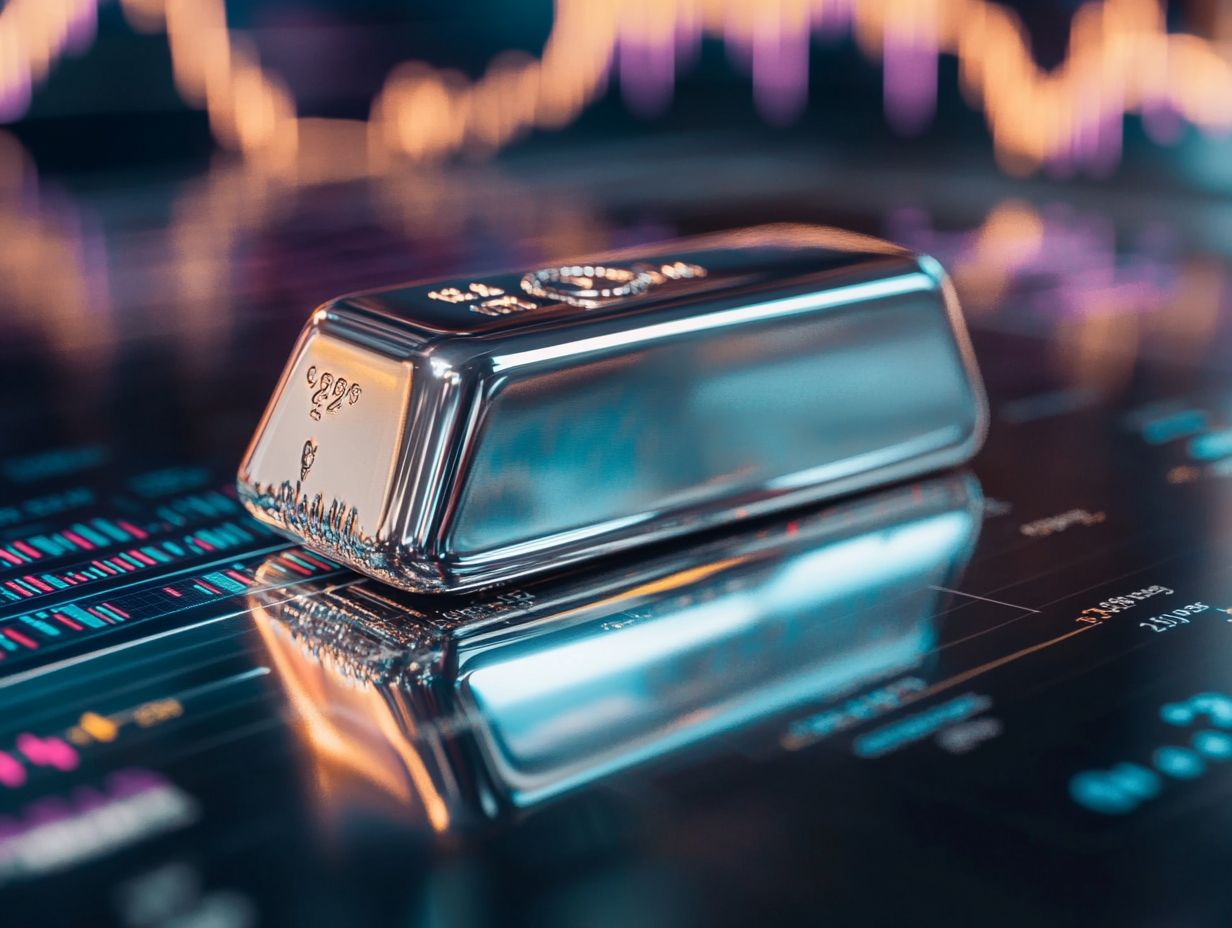
What is Platinum?
Platinum is a precious metal celebrated for its exceptional resistance to corrosion and tarnishing. It is highly coveted across various applications, particularly in the automotive sector, where it is essential for catalytic converters, which reduce harmful emissions from vehicles. Predominantly sourced from countries like South Africa and Russia, platinum’s unique properties render it a valuable asset not only in industrial uses but also in jewelry and investment portfolios, offering a noteworthy alternative to other precious metals like gold.
Its distinct characteristics, coupled with escalating demand in areas such as electric vehicles and biotechnological stocks, amplify its importance in today s market.
This remarkable metal isn t just known for its durability; it boasts a high melting point and excellent conductivity, making it critical in numerous high-tech applications. Historically, platinum was viewed as a rare treasure, often linked to royalty and wealth, and its symbolic value has only grown over the centuries.
Nowadays, industries harness platinum in various ways from its critical role in producing electronic components and laboratory equipment to its increasing application in green technologies aimed at reducing emissions. As global economies pivot toward sustainable practices, the demand for platinum in renewable energy solutions continues to rise, further solidifying its stature in the realm of precious metals.
Current State of the Platinum Market
The current platinum market is anything but static, shaped by fluctuating prices, supply risks from geopolitical tensions, which refer to the potential disruptions in supply due to political instability, and shifting demands in sectors like automotive and industrial applications.
As you delve into the market outlook, you’ll notice that mining outputs from Australia, Canada, and South Africa, along with economic conditions in North America and Russia, play key roles in influencing market trends.
The rising popularity of electric vehicles and increased interest in platinum ETFs, which are investment funds that track the price of platinum, suggest a transformation in investment strategies, emphasizing the metal’s potential for growth even amid ongoing market volatility.
Don’t miss out on this opportunity as the market evolves!
Supply and Demand Factors
The supply and demand factors shaping the platinum market are quite intricate. You have to consider platinum production from major mining players like South Africa and Russia. The shifting automotive demand is spurred by the rise of electric vehicles and increasingly stringent emission regulations.
The balance between supply risks often heightened by geopolitical tensions and the growing industrial uses of platinum creates a complex landscape for you as an investor or stakeholder. Grasping these dynamics is crucial, as they directly impact pricing and market trends. This is especially true regarding the recycling of platinum and sustainability initiatives.
Emerging economies, particularly in Asia, are adding fuel to the fire of platinum demand across various sectors, including jewelry and electronics. As these nations continue to develop, their industrial requirements may intensify demand pressures.
Meanwhile, supply disruptions due to labor strikes or environmental issues can lead to sudden price swings. Keeping an eye on this interplay allows you to navigate potential risks and spot opportunities for strategic investments. This is especially important as the market evolves with technological advancements and new production methodologies.
Understanding these factors is crucial for anyone eager to dive into the platinum market.
Expected Trends in the Platinum Market
In the evolving landscape of the platinum market, you should pay close attention to the indicators pointing towards a potential platinum deficit. This shift is largely fueled by rising demand from emerging technologies and industrial applications. Ongoing supply challenges in maintaining a steady flow are also a significant factor.
Looking to the future, forecasts suggest a growing interest in platinum ETFs and a strategic pivot towards precious metals investments amid increasing economic uncertainties. It’s also important to understand the historical significance of platinum in investment and the implications of demand from sectors like automotive and biotech for successfully navigating complex future market dynamics.
Forecasts and Predictions
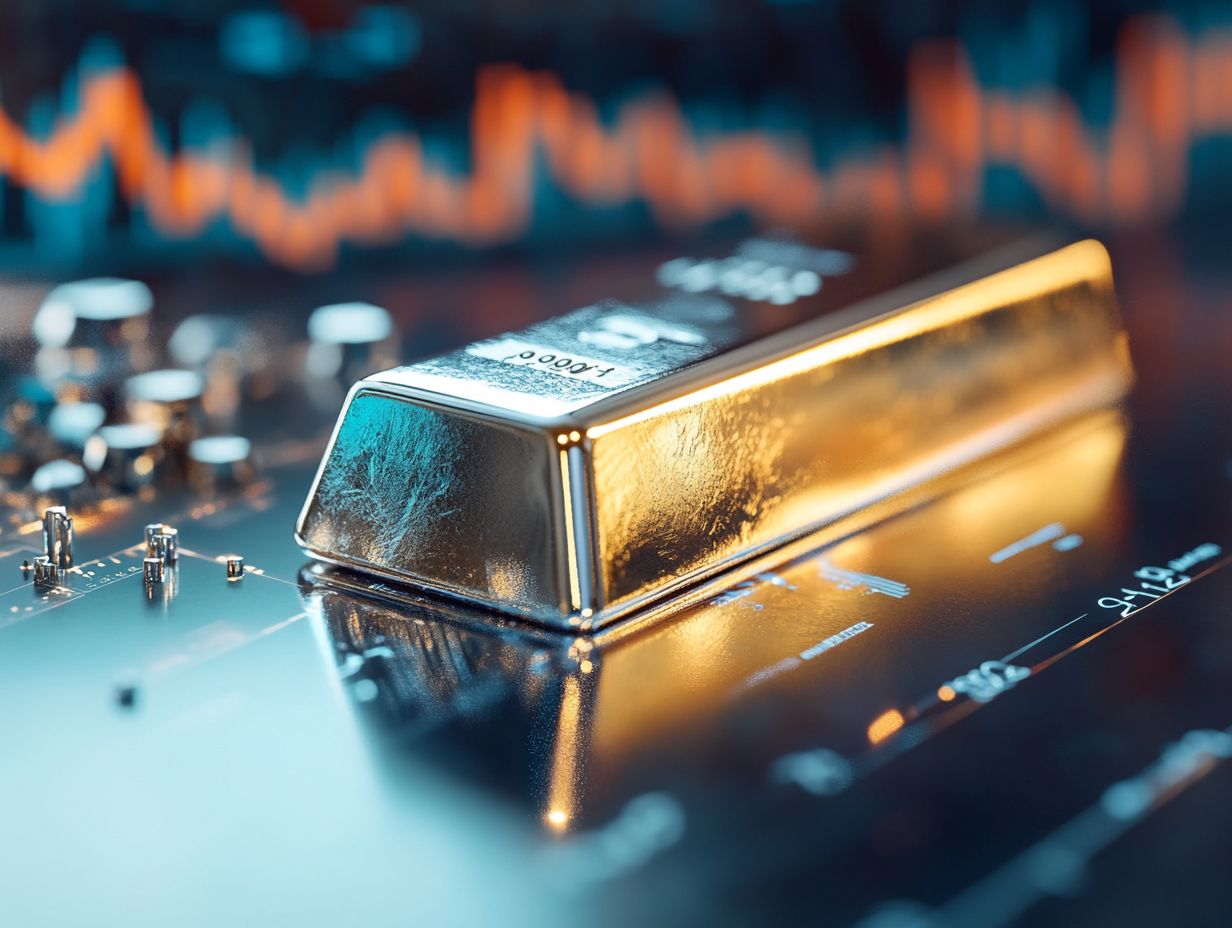
Forecasts and predictions for the platinum market suggest a promising upward trajectory in prices. This is especially true as demand surges in the automotive and cleantech sectors. This trend reflects a broader market sentiment that favors precious metals over traditional investments like gold and cryptocurrency.
Analysts point to factors such as technological innovations in electric vehicles and biotechnological applications as key demand drivers. These will ultimately shape your investment strategies. Ongoing shifts in global supply chains and geopolitical dynamics are expected to significantly influence these forecasts.
As more automakers pivot toward electric vehicles, the crucial role of platinum in catalytic converters and hydrogen fuel cells becomes even more apparent.
Investment patterns are revealing a growing interest in sustainable mining practices. This highlights how ethical considerations are influencing purchasing behavior. Analysts predict that fluctuating mining outputs, exacerbated by stringent environmental regulations, could tighten supply, thereby supporting higher prices.
The convergence of technological demand and investment trends is poised to redefine the platinum market landscape. This presents unique opportunities for discerning investors who are eager to capitalize on these transformative shifts.
Benefits of Investing in Platinum
Investing in platinum offers a wealth of benefits that can elevate your investment portfolio. You’ll find diversification options and potential returns that often surpass those of traditional assets. There’s also the unique opportunity to invest in a market driven by industrial need and new technologies.
As more investors gravitate towards platinum ETFs to access this precious metal, the appeal of such investments becomes even more pronounced. This is especially relevant in a landscape where precious metals like gold fluctuate in price. The promise of strong returns in burgeoning sectors like automotive and cleantech adds to the allure of platinum investments, making it a compelling choice.
Diversification and Potential Returns
Diversification in investing is essential, and platinum presents a unique opportunity for returns that sets it apart from traditional precious metals like gold. By exploring options like platinum ETFs (Exchange-Traded Funds), you can easily gain exposure to this valuable asset.
Incorporating platinum into your portfolio helps you mitigate risks associated with market volatility while taking advantage of the rising demand from sectors such as automotive and industrial applications. This smart way to diversify highlights the importance of viewing precious metals as key components in pursuing your long-term financial objectives.
Investing in platinum, particularly through ETFs, provides an accessible avenue to engage with the dynamics of this precious metal’s market without the hassle of physical storage or high transaction costs. These investment vehicles gather funds from various investors to acquire platinum bullion or related financial instruments, offering liquidity and minimizing management overhead. For those interested in diversifying their portfolio, exploring palladium investment opportunities in 2024 can also be a worthwhile option.
When considering diversification, it’s important to note that platinum often behaves differently from traditional stocks and bonds, adding a valuable layer of resilience to your investment strategy. For those interested in market dynamics, understanding platinum prices: historical trends can provide insights into these features, making platinum ETFs a compelling choice for anyone looking to enhance their portfolio while leveraging the metal’s dual industrial and investment appeal.
Risks of Investing in Platinum
Investing in platinum comes with its share of inherent risks. Market volatility and supply chain challenges can significantly influence platinum prices and your potential returns.
Fluctuations in demand, especially from the automotive sector, along with geopolitical tensions affecting supply lines, contribute to the uncertainty in this precious metal’s market. Grasping these risks is crucial for making informed decisions and crafting effective risk management strategies.
Market Volatility and Other Considerations
Market volatility is a significant consideration for you as an investor in platinum. Factors such as supply risks from key mining regions and shifts in demand from industrial sectors, particularly in automotive and technology applications, influence it.
The interplay of geopolitical issues, labor strikes, and environmental regulations adds complexity to the supply side, often leading to sudden price surges or declines. Understanding how these elements shape market dynamics is essential.
Moreover, fluctuations in currency values can impact your profits from platinum investments. By staying aware of global trends and potential disruptions, you can create winning strategies that not only mitigate risks but also capitalize on opportunities in this intricate market space.
How to Invest in Platinum
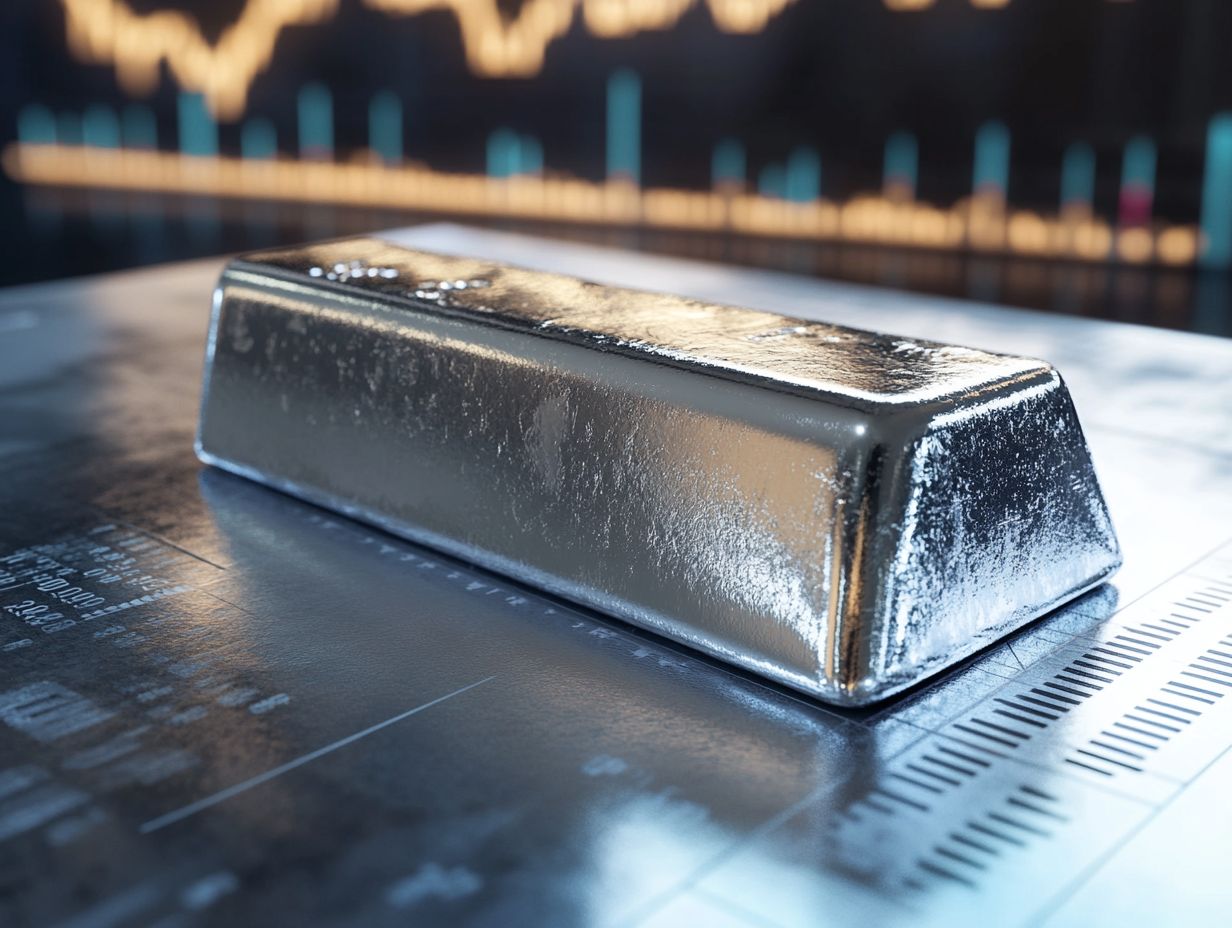
Investing in platinum offers a range of options and strategies, from direct purchases of physical platinum to investing in platinum ETFs and gaining exposure to companies involved in its mining and production.
Each of these methods has distinct advantages and considerations, allowing you to customize your approach based on your financial goals and the current market conditions.
Stay informed about investment news and market trends to refine your decisions in this ever-evolving landscape. Now is the time to explore your options in platinum investing!
Start diversifying your portfolio with platinum today for a brighter financial future!
Options and Strategies
When considering your options and strategies for investing in platinum, you might weigh the benefits of platinum ETFs against the appeal of direct ownership of physical platinum. Each choice offers distinct advantages, especially in terms of how easily you can buy or sell an asset and risk management.
Staying informed about market trends and current investing news can enhance the effectiveness of your strategies. By including exposure to sectors like automotive and technology, you can further refine your investment approach and align with anticipated growth in platinum demand. For insights on this topic, consider investing in platinum: current market trends.
If you’re leaning toward physical platinum, purchasing coins or bars can provide the satisfaction of owning a tangible asset. However, consider the storage and insurance costs associated with it.
On the other hand, platinum ETFs offer a more streamlined way to gain exposure, sparing you the logistical challenges of managing physical metals. Remember to monitor geopolitical factors and currency fluctuations, as these elements can significantly impact platinum prices.
By diversifying your investments and understanding both approaches, you can dive into the platinum market and uncover exciting opportunities for potential gains.
Long-Term Outlook for Platinum Investing
The long-term outlook for platinum investing presents a compelling opportunity, driven by rising demand in industrial applications, especially in the automotive and technological sectors. This trend could significantly elevate platinum prices over time.
As you think about the long-term prospects, consider factors such as geopolitical stability, advancements in recycling techniques, and current market trends. These will shape your investment strategies.
Understanding the dynamics of other precious metals can further enhance your decision-making as you build a diversified portfolio.
Factors to Consider for Future Growth
Several crucial factors are important for future growth in platinum investing. These include technological advancements in electric vehicles, shifts in automotive demand, and the ongoing development of new industrial applications that utilize platinum’s unique properties.
As the market evolves, understanding the impact of world events on platinum prices and overall demand will be essential for you as an investor looking to seize future opportunities. Stay alert! Global economic conditions are rapidly changing and can significantly impact your investments.
Innovations in green hydrogen production and sustainable mining practices are gaining momentum, reigniting interest in platinum as a vital component for clean energy technologies. Industries are increasingly prioritizing sustainability, enhancing the metal’s appeal across various sectors.
Regulatory changes regarding emissions and environmental standards can alter demand dynamics. It s imperative to stay informed about legislative updates and international agreements.
By remaining attuned to these multifaceted developments, you can effectively position yourself to navigate the complexities of the evolving platinum market.
Frequently Asked Questions
What is the investment potential of platinum in 2024?
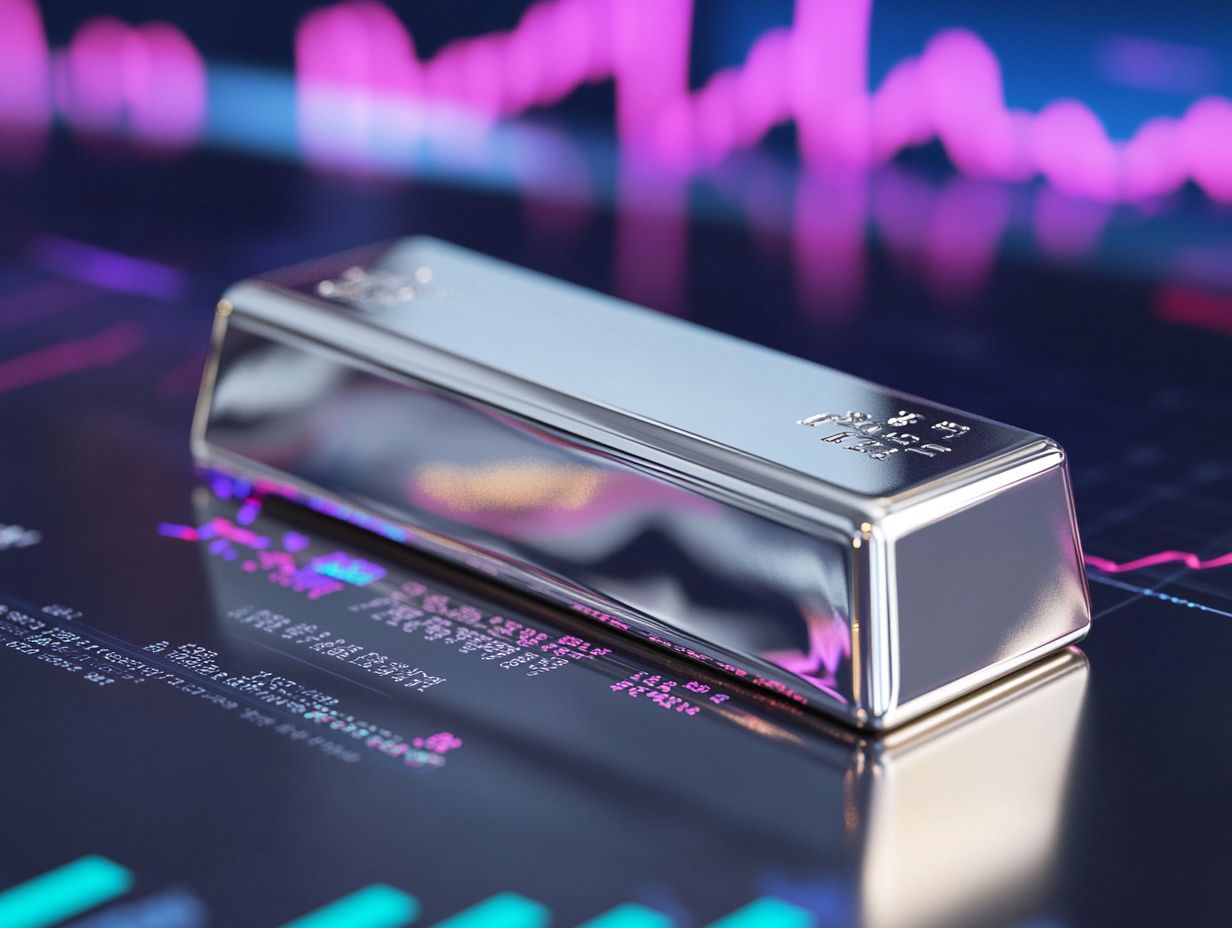
The investment potential of platinum in 2024 is expected to be high due to increasing demand in various industries, such as automotive, electronics, and jewelry.
Why is platinum considered a good investment in 2024?
Platinum is a good investment in 2024 because it is a rare and valuable metal with diverse industrial uses, making it a reliable long-term investment option.
What factors contribute to the investment potential of platinum in 2024?
The investment potential of platinum in 2024 is influenced by factors such as global economic growth, supply and demand dynamics, and political stability in major platinum-producing countries.
How has the price of platinum performed in recent years?
In recent years, the price of platinum has shown a steady increase.
This trend makes it an attractive investment option for those seeking stable returns.
What makes platinum different from other precious metals in terms of investment potential?
Platinum stands out from other precious metals due to its various industrial uses.
This diverse demand helps shield it from economic downturns, boosting its value as an investment.
Is it a good idea to invest in platinum in 2024 for diversification purposes?
Investing in platinum in 2024 is a smart choice for diversification.
Its low correlation with other assets can help lower your overall investment risk. Don’t miss out on this exciting opportunity!















